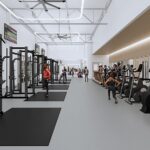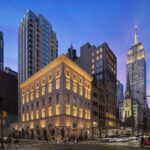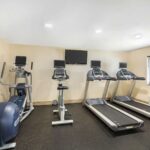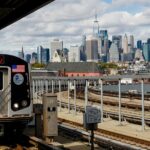I’ve spent years exploring New York in the margins—down unmarked stairwells into speakeasies, along warehouse walls where fresh paint dries on world-class murals, and inside pop-up galleries that disappear in a week. Unique New York Experiences: From Speakeasies to Street Art is more than a catchy phrase; it’s a real, lived pathway to seeing the city like a local with a curious streak. In this guide, I’ll share the best ways to find hidden bars, savor secret tastings, and decode street art scenes, backed by practical advice, on-the-ground examples, and the lessons I learned from doing it myself.

Source: explorestlouis.com
Why Unique New York Experiences Matter Right Now
New York constantly reinvents itself. When I plan nights out, I skip the obvious and look for spaces where craft, creativity, and community meet. That means hidden cocktail dens in Midtown, warehouse murals in Bushwick, hush-hush supper clubs in Brooklyn, and late-night jazz in the Village. These offbeat experiences are where I meet passionate bartenders, muralists, chefs, and guides who love what they do—and it shows.
What makes these experiences stand out:
- Depth over checklist tourism. You’ll remember the bartender who torched a rosemary sprig tableside and the artist who explained why a piece is layered with wheatpaste under spray.
- Cultural literacy. Street art is a living conversation about identity, politics, and neighborhood history. Knowing the basics enriches every walk.
- Small-scale excellence. Speakeasies and pop-ups thrive on detail—house-made syrups, seasonal menus, curated vinyl, or site-specific installations.
Pro tip from experience: Aim for weeknights. I’ve had the best conversations with artists and bar managers when the room wasn’t slammed.

Source: www.viator.com
Speakeasies And Hidden Bars: Finding The Door And Owning The Night
I still remember my first real speakeasy moment: a bodega refrigerator door swung open to reveal a candlelit room humming with jazz. Since then, I’ve kept a checklist that helps me find the good ones and avoid common pitfalls.
How to spot and enjoy NYC speakeasies:
- Look for decoys. Some entries are behind phone booths, neon barber poles, or unmarked staircases. If it feels wrong, you may be close.
- Reserve when possible. Top rooms fill up; many take limited bookings online. Walk-ins work early evening or late night.
- Read the menu like a map. Truly unique spots spotlight house techniques: clarified milk punches, fat-washed spirits, lacto-ferments, or local amari.
- Ask for dealer’s choice. I tell the bartender my base spirit and flavor mood. The best bars craft something I couldn’t have imagined.
- Mind etiquette. Low voices, no flash photography, no crowding the bar. Speakeasies value ambiance and craft.
Common mistakes to avoid:
- Group overload. Many hidden bars are intimate. I cap my group at four to keep seats and vibes.
- Ignoring house rules. Dress codes exist at a few higher-end lounges. I always check before heading over.
- Ordering only classics. The point is discovery; try the signature list first.
Neighborhood notes I share with friends:
- Lower East Side and East Village. Dense with inventive cocktail labs and hidden lounges.
- Midtown and Chelsea. Surprising number of behind-the-door concepts near landmarks if you know where to look.
- Williamsburg and Greenpoint. Younger bar programs with playful seasonal menus and natural-wine crossovers.
Responsible tip: NYC’s open-container law is enforced. Plan transit home before the second round.
Street Art Safaris: Murals, Messages, And Ethical Exploring
Street art is a living museum in New York. The first time I walked the Bushwick Collective on a crisp morning, I watched artists layering new pieces—fast, precise, and improvisational. Since then, I plan my routes with intention.
Where I go for reliable, rotating art:
- Bushwick Collective, Brooklyn. Massive outdoor gallery walls; new work appears throughout the year.
- Lower East Side and Alphabet City. Paste-ups, stencils, and smaller murals packed into walkable blocks.
- Williamsburg and Greenpoint. Mixed styles from abstract to character-driven pieces.
- Uptown, Harlem and Washington Heights. Community-forward murals that reflect neighborhood histories and voices.
How I explore responsibly:
- Photograph respectfully. No blocking sidewalks or doorways. Avoid climbing or leaning on gates.
- Credit the artist when sharing. Signatures and Instagram handles are often on the corner of the piece.
- Don’t buy illegal prints or merch. Support artists at legit shops, galleries, or via their official accounts.
What to look for like a pro:
- Layers and materials. Wheatpaste posters under stencil details add texture and history.
- Tags and crews. Repeated signatures hint at collectives; you’ll start recognizing styles across the city.
- Context. Nearby murals often respond to each other. Read the block as a conversation.
Best time for photos:
- Early mornings or golden hour for soft shadows and minimal pedestrians.
- After rain for dramatic reflections and richer color saturation.
Safety and comfort:
- Stick to well-trafficked routes after dark or go with a reputable tour. I carry a small crossbody and keep gear minimal.
Underground Dining, Supper Clubs, And Immersive Theater
Some of my most memorable NYC nights weren’t in restaurants—they were in living rooms and lofts where a chef plated a tasting menu for eight, or in immersive shows where the line between audience and actor blurred.
How to tap into the scene:
- Join waitlists. Many supper clubs and chef pop-ups run via newsletters or private lists. Patience pays off.
- Read the etiquette. BYOB or pairing menus, shoe policy, arrival windows—tiny details matter.
- Stay flexible. Dates shift, locations arrive last-minute, and menus adapt to seasonal markets.
Immersive experiences worth seeking:
- Dining-and-theater mashups. I’ve done events where a course hinted at a plot twist.
- Secret jazz sets and vinyl listening rooms. Sign-ups unlock coordinates and late-night vibes.
- Theme-led menus. Chefs riff on boroughs, immigrant histories, or a single ingredient.
My rule of thumb:
- Pay attention to sourcing. The best underground dinners proudly share farms, fishmongers, and seasonal highlights. That transparency signals quality and care.
Rooftops, Night Walks, And Skyline Secrets
After a tucked-away cocktail or mural walk, I often reset with a skyline view. Rooftops and night walks deliver that exhale only New York can give.
Rooftop and night-walk playbook:
- Choose rooftops with a reservation system. It cuts wait times and guarantees seating.
- Off-peak magic. Stormy evenings and shoulder seasons mean fewer crowds and dramatic skies.
- Night bridges. The Manhattan Bridge pedestrian path offers epic views without the Brooklyn Bridge crush.
- Waterfront strolls. Hunter’s Point South Park and Brooklyn Bridge Park are my go-tos for reflections and long exposures.
Photography tips I’ve learned the hard way:
- Bring a compact tripod or brace your camera on a railing for sharper low-light shots.
- Lock focus and exposure before recomposing to avoid blown highlights.
- Pack a microfiber cloth. Rooftops get windy, and sea spray travels.
Practical note: Some rooftops enforce dress codes or bag checks. I carry a slim jacket to meet requirements and stay warm at altitude.
Planning, Budgeting, And Safety: How I Make It All Work
A little structure frees you to be spontaneous. Here’s how I plan a night that flows from hidden bars to murals to late-night bites.
My planning framework:
- Pick a hub. Choose one neighborhood to reduce transit time between stops.
- Anchor with a reservation. One timed booking—speakeasy, gallery, or rooftop—structures the night.
- Layer in flexible stops. Murals, cafes, and walkable viewpoints slot in around the anchor.
- Set a budget. I expect $16–24 per cocktail, factor in tax and tip, and keep subway fare or ride-share estimates in mind.
- Backup options. Save two alternate bars or cafes nearby in case of capacity issues.
Safety and logistics:
- Transit first. I map last-train times and keep a backup ride option bookmarked.
- Cash-lite. Most spots are card-friendly, but a small cash stash is handy for tips on tours or buskers.
- Weather-aware. I check wind speeds for rooftops and precipitation for mural districts; slick sidewalks change the plan.
Data-driven reality check:
- Peak crowds hit Thursday to Saturday evenings in nightlife districts. I shoot for Sundays or Mondays for calmer service.
- Street art turnover varies by block; high-visibility walls refresh faster after major festivals or seasonal showcases.
What I pack:
- Portable charger and short cable
- Reusable water bottle
- Compact umbrella or foldable jacket
- ID and a transit card loaded for the night
Frequently Asked Questions Of Unique New York Experiences: From Speakeasies To Street Art
How Do I Find Legit Speakeasies Without Spoiling The Surprise?
I look for bar programs recognized for craft techniques and ambiance rather than viral gimmicks. Book discreetly when possible, arrive early, and ask the bartender for a dealer’s choice to experience their strengths without needing a secret menu.
What’s The Best Neighborhood For Street Art If I Only Have Two Hours?
Bushwick offers the highest density-to-walk-time ratio. Start around the main mural corridors, loop two to three blocks, and you’ll see styles ranging from large-scale murals to detailed stencils and paste-ups.
Are Street Art Tours Worth Paying For?
Yes, if you want context. Good guides explain artist lineages, techniques, and neighborhood histories, helping you read the walls instead of just photographing them. I’ve picked up ethical tips and discovered emerging artists that I now follow.
Can I Bring Kids To See Murals Or Visit Rooftops?
Murals are family-friendly in daylight hours. Rooftop access varies; many welcome minors during daytime with an adult but switch to 21+ at night. Always check venue policies before heading out.
How Much Should I Budget For A Night Of Hidden Bars And Art?
For two cocktails, a light bite, and transit, I set aside $70–$120 per person, depending on the bar and whether I add a paid tour or rooftop cover. You can trim costs by going during happy hours or sharing small plates.
Is It Safe To Explore Street Art After Dark?
Stick to well-lit, busier corridors or go with a group or guided tour. I keep valuables minimal, stay aware of my surroundings, and shift to indoor spots if a block feels too quiet.
Do Artists Mind If I Photograph Their Work?
Generally, public murals are fine to photograph for personal use. Credit the artist when posting if their handle or signature is present, and avoid blocking businesses or driveways while shooting.
Conclusion
New York’s best-kept memories live behind unmarked doors and across living canvases that change with the week. When I pair a speakeasy’s quiet craftsmanship with a mural walk and a skyline reset, I leave with a story only this city could write. Start with one neighborhood, anchor your plan with a reservation, and give yourself room to wander. You’ll discover flavors, faces, and colors that never show up on the usual lists.
Ready to design your own night? Save this guide, share it with a friend, and drop your favorite hidden find in the comments. If you want more curated routes and monthly picks, subscribe for my latest NYC field notes.
Watch This Video on Unique New York Experiences: From Speakeasies to Street Art






